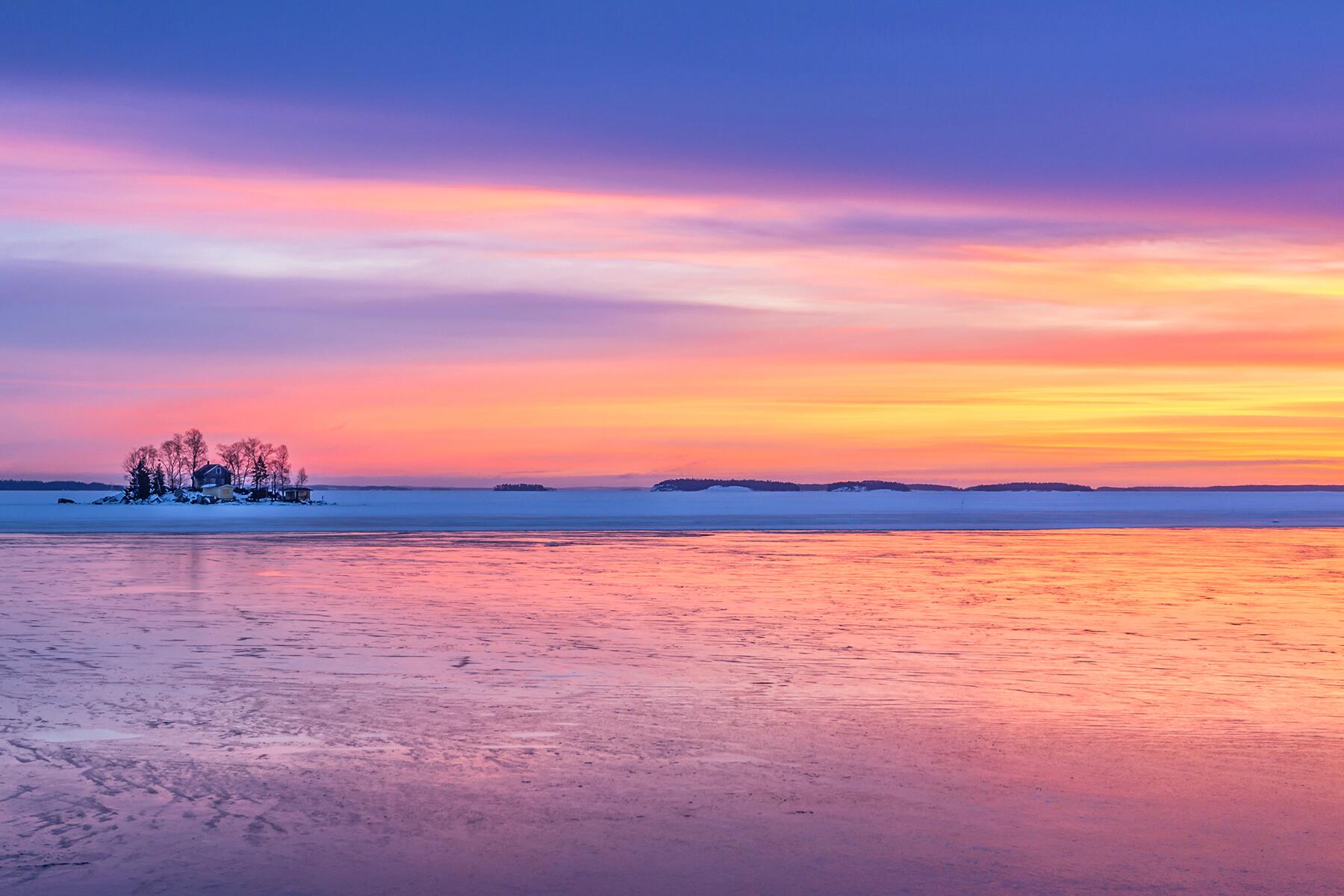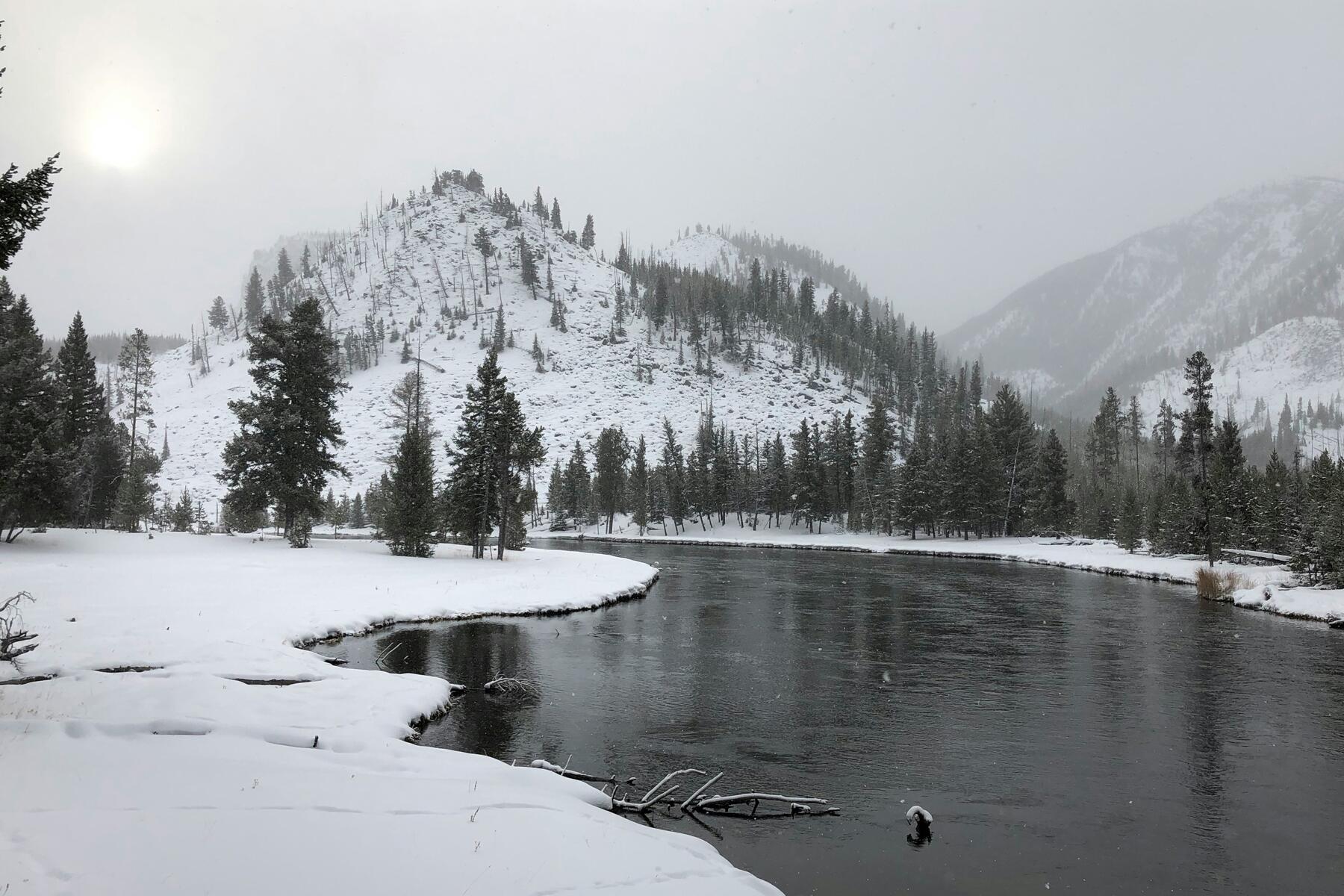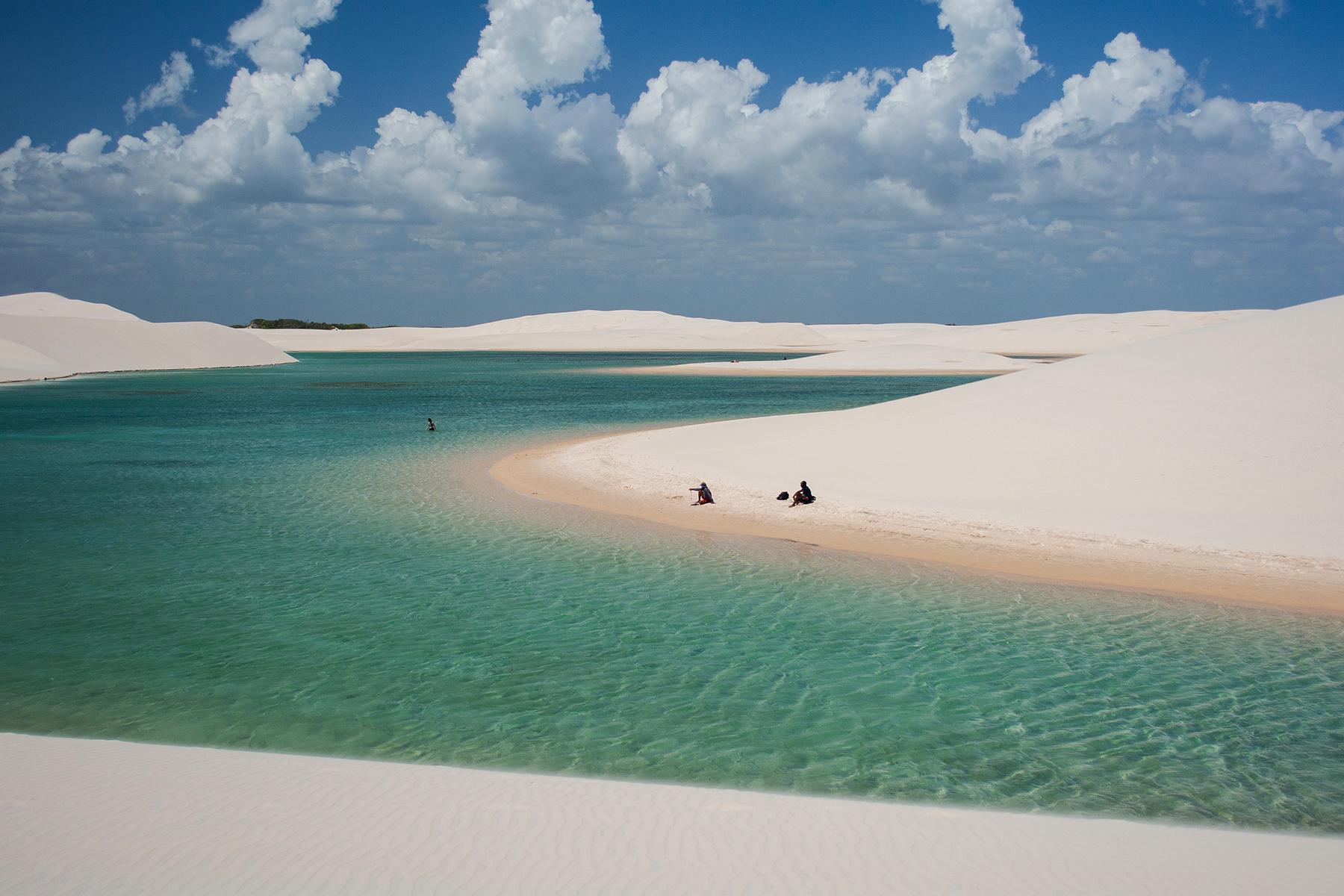For a step into the truly great outdoors, it doesn't get much better than Brazil's diverse wonderland of incredible natural attractions.
Ask any nature lover to list their favorite natural wonders, and the result will be as varied as the destinations themselves. Whereas every country in the world has its own unique gift from mother nature, Brazil is one of the few that can confidently boast its ability to satisfy practically any whim when it comes to natural attractions. From vast deserts to fertile rainforests to exotic wetlands to imposing plateaus riddled with underground caves, Brazil is a true wonderland that’s ripe for exploring. Some, such as the Amazon and the Pantanal, are well-known, while others like Ilha de Marajó and Mount Roraima are bonafide hidden gems. To get your nature fix, check out these outstanding natural spectacles in Brazil.
Top Picks for You
Ilha de Marajó
WHERE: Pará
The residents of Ilha de Marajó rarely see tourists visiting their island, which is surprising given it’s the size of Switzerland and right at the mouth of the Amazon River. This river island—which happens to be the largest in the world—is one of the best ecologically-preserved areas in the Amazon and its pink-hued sandbanks backed by thick vegetation and twiggy trees make a striking landscape. And it’s not just the scenery that is particularly eye-catching; the water buffalo-mounted police unit that patrols the three small towns on the island is also a sight to behold.
Chapada dos Veadeiros
WHERE: Goiás
If rocks could talk, the ones at Chapada dos Veadeiros would have a few stories to tell—1.8 billion years worth, to be exact. This vast national park is riddled with quartz stones and crystals that are believed to have healing properties, yet most visitors replenish their soul simply by bathing in the natural pool formed in front of the Pedreiras waterfall. The aptly named Vale da Lua (“Valley of the Moon”) is an otherworldly rock formation where years of corrosion have distorted this former riverbed into rugged dips and pits.
Recommended Fodor’s Video
Fernando de Noronha
WHERE: Pernambuco
Located about 271 miles off the northeast coast of Brazil, Fernando de Noronha is a volcanic archipelago made up of 21 islands and is considered Brazil’s true paradise on earth. Pearly-white beaches and dazzling turquoise waters backed by dramatic charcoal-hued peaks and vibrant-green palm trees seem like a Photoshopped tropical scene. The area is a protected marine park; rules that limit the number of daily visitors help preserve the natural environment, including its rich marine life which consists of sharks, dolphins, turtles, rays, and many endemic fish species.
Alter do Chão
WHERE: Pará
The Ilha do Amor, or “Love Island,” is the most famous beach of Alter do Chão and is considered one of the most beautiful freshwater shores in the world. For about seven months of the year, this lagoon beach is submerged by the rising river that swells from the rainy season and completely disappears. Yet, between August and December, the crystalline water edges back to reveal snow-white sandbanks and tufts of vegetation that explode into vibrant greens thanks to a recipe of fertile soil and sunny days. The surrounding waters are rich in Amazonian river-life and the clean air provides a bright starry sky to get lost in after the spectacular sunset of burnt orange and dusky blue hues.
Urubici
WHERE: Santa Catarina
Urubici itself is actually a small nondescript town yet it’s the surrounding natural area that we’re here to talk about. Dramatic mountain peaks with hairpin curves and sheer drops make up the bulk of the landscape and include special attractions such as ancient rock carvings dating back 3,000 years ago and the Cachoeira Avencal waterfall that plunges over 328 feet off the side of a flat-top plateau. You can see the waterfall from either the top or the bottom. Alternatively, you can zipline over the cavity where the waterfall plunges.
INSIDER TIPIf heights aren’t your thing, you may want to skip the zipline.
Mount Roraima
WHERE: Roraima
Straddling the border of Brazil, Venezuela, and Guyana, Mount Roraima is a mighty 9,186 feet-high tabletop mountain with a 19 mile-square summit and sheer cliffs of up to 1,330 feet high. Its prehistoric vibe is not your imagination; many of its rocks date back to 2 billion years ago, making it one of the oldest geological formations on earth. The top of Mount Roraima experiences heavy rainfall throughout the year leading to several sporadic and temporary waterfalls forming off the plateau. The best time to go is between December and April, during the dry season.
INSIDER TIPIts challenging trail up to the peak and the unnerving possibility of getting lost in the fog at the top means it’s best to go with a guide. Excursions can be booked in advance.
Lençóis Maranhenses
WHERE: Maranhão
With miles upon miles of curved, flour-white sand dunes and royal blue lagoons nestled in between, Lençóis Maranhenses in northern Brazil is one of the country’s most beautiful natural attractions and has, so far, avoided becoming a tourist trap. The park is huge and doesn’t have any clearly-defined roads, so you can wander through what seems like a totally untouched vast expanse of land. However, if you do plan any such wanderings, it’s best to do so with a guide.
INSIDER TIPThe best time to visit is between July and August. This way, you avoid the heavy rainfall, but still get the swollen lagoons that remain from the rainy season and the sunny days of the dry season.
Presidente Figueiredo
WHERE: Amazonas
If you like waterfalls, then you’re going to love Presidente Figueiredo. Accessible by car and with clearly-defined forest trails, it is one of the few spots in the Amazon that you can explore without the need of a guide. Besides the Amazon forest itself, one of the main draws of Presidente Figueiredo is its bounty of waterfalls; over 100 cascades are dotted throughout the park. Some you can bathe and swim under, others gush immense volumes of water and create turbulent pools that are best admired from safe ground.
Bonito
WHERE: Mato Grosso do Sul
The appropriately named Bonito—which literally translates to “pretty”—is one of those places where nature effortlessly produces something utterly stunning. From crystal-clear rivers that contain a wonderland of freshwater corals and shoals of colorful fish to deep underground caves decorated with towering stalagmites and stalactites, Bonito is a dream destination for nature lovers. Check out the Abismo Anhumas, which involves abseiling 72 meters into a subterranean abyss and the Buraco de Araras, an ochre-hued crater that is home to hundreds of wild Scarlet macaws.
Ubajara Nnational Park
Covering an area of just over 15,500 acres, Ubajara may be Brazil’s smallest national park yet it still manages to pack in several waterfalls (three of which are over 230 feet high), an ecologically diverse environment, and a huge cave with nine limestone chambers, known as the Gruta de Ubajara.
INSIDER TIPTake the cable car that runs over the tree-top canopies and descends into the cave for a bird’s-eye view of the park and allows for a chance to explore the cave’s chambers.
Chapada Diamantina National Park
WHERE: Bahia
Chapada Diamantina is a vast national park in Bahia made up of flat-top plateaus and deep canyons that are home to a complex ecosystem complete with several endemic species. While all of this is very impressive, it’s the two cave lagoons—aptly named Blue Pool and Enchanted Pool—of translucent water with an electric-blue hue that are main attractions. The water is so clear that you can see the bottom of the 53-foot deep pool with ease, and the natural light reflects off the water’s molecules to create a vibrant blue tinge.
Alto Ribeira State Tourist Park
WHERE: São Paulo
Alto Ribeira is a protected national park that’s home to part of the Atlantic Forest, a huge woodland that spans the length of Brazil’s east coast. What’s particularly special about Alto Ribeira Park is that it contains around 300 caves, resulting from a mix of heavy annual rainfall and a bounty of malleable limestone rocky structures. Among the best caves to visit are the Caverna de Santana (considered one of the most beautiful in Brazil thanks to its unusual rock formations) and the Caverna do Morro Preto (known for its especially striking entrance).
Amazon Rainforest
WHERE: Northwest of Brazil
No list of natural attractions in Brazil would be complete without mentioning the largest and most ecologically diverse rainforest in the world: the Amazon rainforest. Despite constant battles against deforestation, illegal mining, and intrusive dam constructions, the entire Amazon basin spans an area twice the size of India. What’s truly special about the Amazon is that it houses 10% of all known biodiversity in the world, including many endangered and endemic species.
Pantanal
WHERE: Mato Grosso do Sul
The large lily pads floating on vast swamps surrounded by an explosion of dense and varied vegetation have piqued the curiosity of nature fiends for decades and has made the Pantanal one of the most exotic spots in Brazil. Being the largest tropical wetland in the world means there is plenty of space for its resident ecosystem to thrive and animals such as caimans, capybaras, tapirs, and jaguars call the Pantanal their home. Keep your eyes also peeled for the Hyacinth macaw, the large, vivid-blue parrot with a distinct yellow ring around its eyes.
Serra dos Órgãos
WHERE: Rio de Janeiro
Rio de Janeiro isn’t just beaches, the Christ the Redeemer statue, and samba. Just outside the city is Serra dos Órgãos, a spiky mountain range that couples lengthy hikes with outstanding views. There are 10 peaks in the park that stand over 6,562 feet tall, including the famous God’s Finger, named for its resemblance to a large index finger pointing towards the sky. During the winter, the temperature can drop below 0 degrees Celsius at the park’s highest peaks.
Tumucumaque Mountains National Park
WHERE: Amapá and Pará
Covering an area nearly the size of the Netherlands, the Tumucumaque Mountains National Park is the largest tropical forest park in the world despite, remarkably, making up just 1 percent of the entire Amazon rainforest in Brazil. It’s home to several endangered species, such as sloths, various types of primates, and jaguars. Yet, other than that, little is known about the area. Bounded on all sides by dense vegetation and made up of tough, rocky peaks at its center, the park is extremely remote and hard to access, making research—and thankfully, poaching—in the area a painfully slow process.
Itatiaia National Park
WHERE: Between Rio de Janeiro and Minas Gerais
Itatiaia National Park is the oldest in Brazil and one of the most biologically diverse, thanks to its luck of avoiding the coffee farming boom decades ago, which destroyed many natural habitats. Wildlife fiends will be in their element there with potential sightings of toucans, sloths, hummingbirds, and the elusive maned wolf. It’s also home to some of Brazil’s largest mountains, including the Pico de Prateleiras and the Pico das Agulhas Negras; both provide challenging yet visually-rewarding hikes to their summits.
Jalapão State Park
WHERE: Tocantins
This vast national park in the northeast of Brazil is made up of dramatic landscapes including burnt-orange sand dunes with pockets of coarse vegetation poking through the sand to vast flat-top plateaus and fertile forests replete with waterfalls. The area’s natural habitats are among the most diverse in Brazil and, best of all, it’s a region that barely registers on any tourist itinerary, meaning the environment is untouched.
Abismo Guy Collet
WHERE: Amazonas
Located in a tepui—a table-top mountain in the Guiana Highlands—in a remote and hard to access part of north Brazil, Abismo Guy Collet is the deepest cave in South America and subjectively the most intriguing. Surrounded by wild, untouched jungle, the cave sinks through the summit of the tepui and reaches a vertical depth of 2,201 feet. It was only discovered and explored for the first time in 2006 and much of its underground secrets are, well, secrets.
Foz do Iguaçu
WHERE: Paraná
One of Brazil’s greatest natural wonders, Foz do Iguaçu is a place that’s best seen in person— pictures can never do justice to the thundering sound of 275 waterfalls plummeting into the turbulent pool below. The falls mark the boundary between Brazil and Argentina and, at 1.7 miles wide, Foz do Iguaçu is over twice the width of Niagara Falls. Edge along the wooden platform and peer down the Devil’s Throat, a 263-foot tall collection of 14 waterfalls that’s shaped like a horseshoe.
Ilha Grande
WHERE: Rio de Janeiro
When speckled boulders bookend lily-white beaches and the aquamarine sea is inviting to say the least, it leaves no wonder why a place like Ilha Grande is considered Rio de Janeiro’s picturesque island getaway. Besides being obviously stunning, the island is also full of wonderful surprises such as forest trails, mountain hikes, and an abandoned prison that has been slowly taken over by nature. The fact it’s a car-free zone reduces pollution in the area and the island has a refreshing lack of human development.
Chapada dos Guimarães
WHERE: Mato Grosso
Chapada dos Guimarães is often overlooked but that’s simply down to a lack of media exposure rather than the park not being worthy of a mention. This national park, with its dusty red plateaus and vast plains of bushy trees and green shrubs, is a natural haven and home to a diverse range of birds, including burrowing owls and red macaws. Among the most popular attractions is the Bridal Veil waterfal, which free falls 282 feet off an inward-facing cliff. It’s also worth mentioning that well-preserved cave paintings and fossils are dotted throughout the park.
Tijuca Forest
WHERE: Rio de Janeiro
Depending who you ask, Tijuca Forest is considered the largest urban forest in the world, although some will readily disagree, giving the title instead to the one in Johannesburg, South Africa. Either way, nothing beats the fact that the Tijuca forest was hand-planted in the late 1800s after the area was destroyed by sugarcane and coffee farming. Fast forward to the present, and the forest is now flourishing with hundreds of different species of plants and animals, including cheeky marmosets and comical toucans.
Lagoinha do Leste
WHERE: Santa Catarina
Lagoinha do Leste is a beach in the south of the Florianopolis aka “Magic Island,” and what a pretty beach it is. Its tricky accessibility has hindered any chance of man-made developments so the heavenly white shore remains untouched, bounded on one side by a rugged sea and by forest-carpeted peaks on the other. You can get there by boat, but most people prefer to hike so that they can stop by the rocky ledge to take in sweeping views of the beach and the endless stretch of ocean. However you feel about the lines of people jostling to get a selfie there, it’s an undeniably picture-perfect spot for a photo.
Gruta da Maquiné
WHERE: Minas Gerais
Located 394 miles from Belo Horizonte, Gruta da Maquiné is a 2,133 feet cave that has captured the attention and excitement of paleontologists for decades. Within its seven perfectly sculptured chambers that have been carved and chiseled by water for thousands of years, prehistoric remains and fossils have been discovered including bones of our ancestors, a fully-intact skeleton of a large sloth, and well-preserved cave paintings.
Porto de Galinhas
WHERE: Pernambuco
Mile upon mile of powdery coastline with warm, crystal clear seawater and wild palm trees set the scene for this picturesque paradise. Although a popular getaway among Brazilians who come seeking out quiet beaches and natural beauty, the whole infrastructure has remained low-key, so you can just as easily wine-and-dine at a lively bar as you can escape everyday life and get back to nature. The warm, sapphire blue waters create natural rock pockets that are teeming such marine life as rare seahorses!
INSIDER TIPThe Maracaípe River near Porto de Galinhas beach is the spot to explore mangroves and visit the seahorse sanctuary.
Cavernas do Peruaçu National Park
WHERE: Minas Gerais
The large Cavernas do Peruaçu National Park is named after its two biggest natural phenomena—large quantities of limestone caves (“cavernas”) and the Peruaçu River that runs across the land. One of the most striking is the Gruta do Janelão, a 15,420-foot cave, where a mini-forest grows inside thanks to a combination of crevices that allow sunlight and river water to course through it.
Itaimbezinho Canyon
WHERE: Between Rio Grande do Sul and Santa Catarina
Located in the Aparados da Serra National Park, the Itaimbezinho canyon is one of the longest in Brazil at 19,029 feet and stretches 2,362 feet into the air. The bottom of the canyon is lined with squat vegetation and shaggy pines that house woodpeckers, hawks, and wildcats. Many of the rock formations are more than 130 million years old, proving their strength against time and they provide winding, forest-edged trails for nature explorers.
Dunas de Genipabu
WHERE: Rio Grande do Norte
The rolling, white sand dunes of Genipabu are the highest in Brazil and mostly attract tourists for the thrill of sand-boarding down their steep sides. When you’re not hurtling down dunes though, there is always the palm-fringed beaches and freshwater lagoons to admire. Despite not being an animal you would expect to see in Brazil, the camel rides across the sandy landscape are popular among tourists who venture this far north.
Cascata do Caracol
WHERE: Rio Grande do Sul
The main attraction at the Caracol State Park is the Cascata do Caracol waterfall, a huge cascade that tumbles off the edge of a forest-covered, curved platform before free-falling 430 feet into the woodlands below. The rest of the park still has plenty to offer with a network of well-defined forest trails and more than 130 different species of birds to keep an eye out for.




